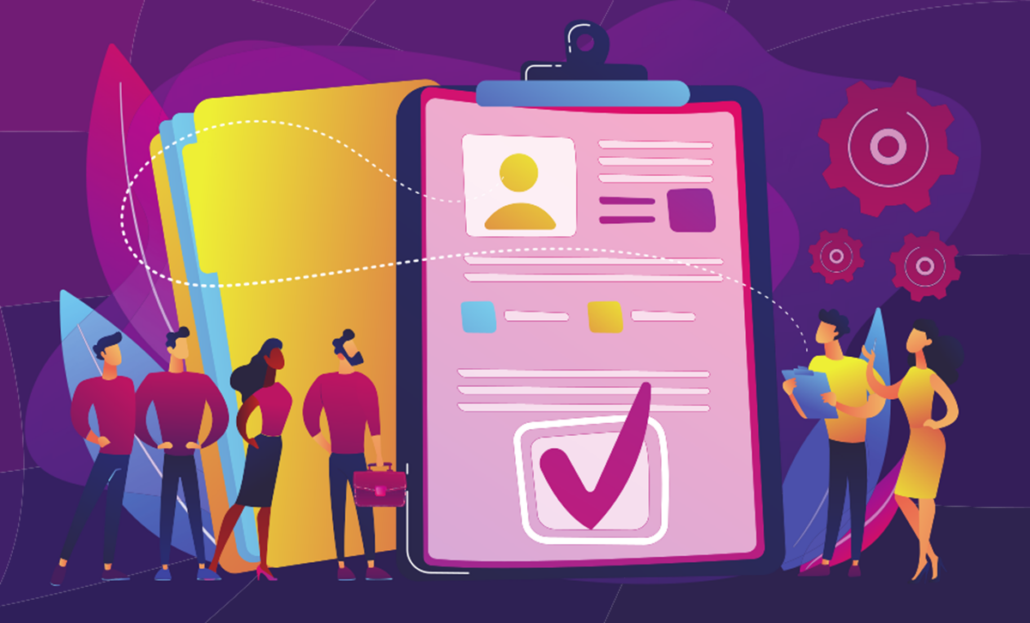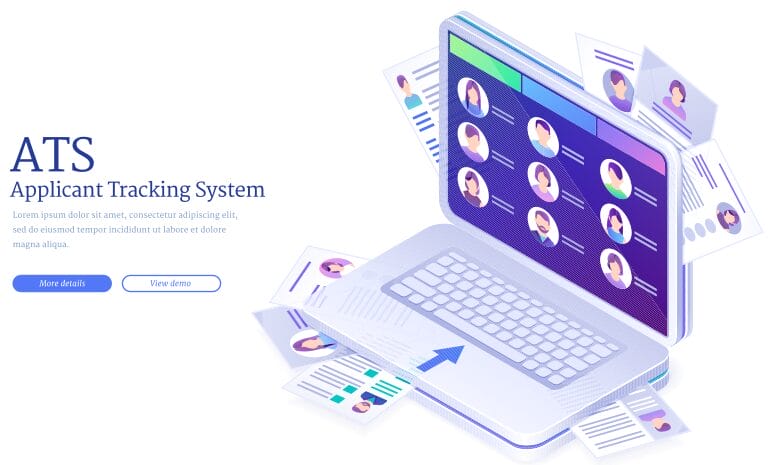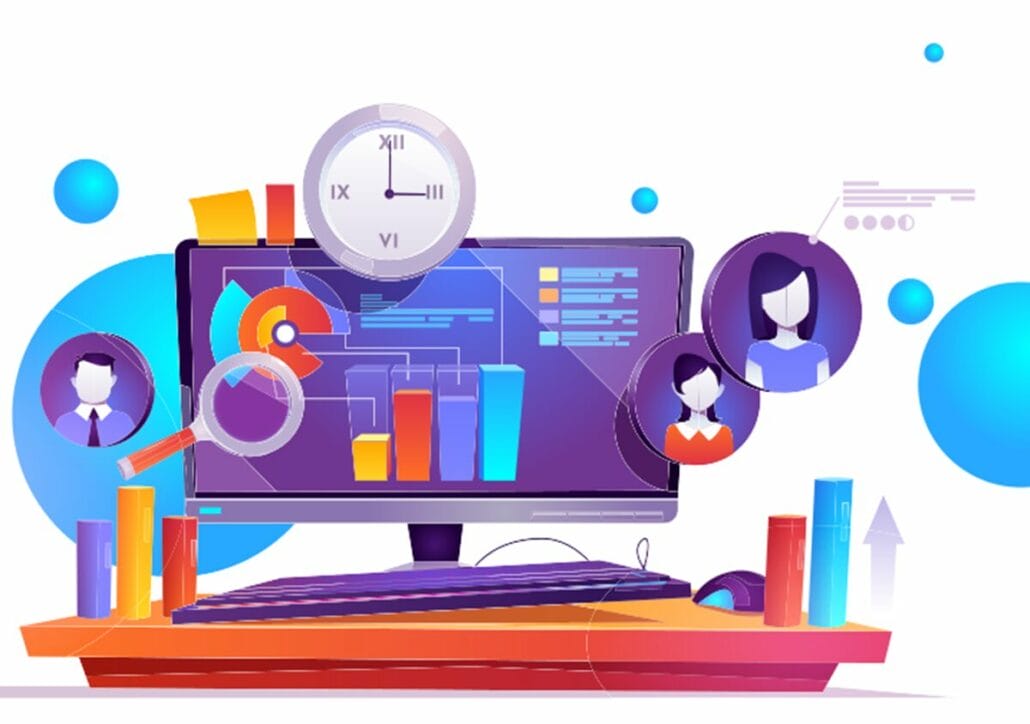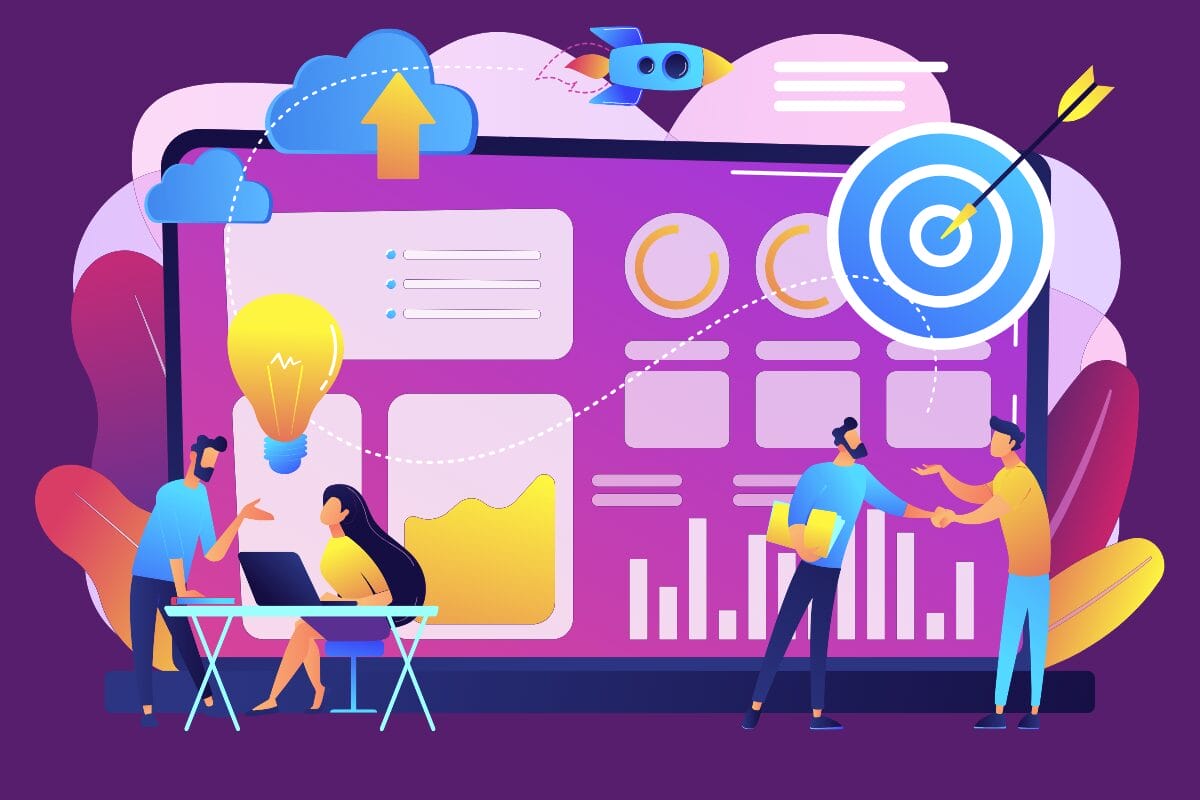Struggling to keep up with HR demands? There are a variety of tools designed to help HR professionals complete their tasks sooner and with more accuracy. Efficient, reliable, and user-friendly, our curated selection of the best HR tools for human resources will address your specific pain points – from talent acquisition to engagement analytics. Expect to discover tools that not only simplify, but also enrich human resource management, preparing your business for a more efficient future.
Key Takeaways
- HR tools are critical for automating and integrating various HR processes such as onboarding, performance monitoring and management, and payroll, enabling HR professionals to focus on workforce well-being and development.
- Innovative recruitment, onboarding, and retention strategies facilitated by HR technologies, like applicant tracking systems and employee engagement platforms, are essential for attracting and retaining top talent.
- Data-driven tools in HR, including workforce analytics, predictive analytics, and customized reporting, empower HR professionals to make informed decisions for strategic planning and improve overall HR tactics.
HR Tools: A Comprehensive Overview

The heartbeat of any successful organization is its ability to adapt and evolve, and HR tools are the lifeblood that sustains this vital rhythm. These tools encompass an extensive range of HR operations, including various HR processes such as:
- New hire onboarding
- Workforce management
- Time and attendance tracking
- Payroll processing
- Administration of benefits
- Employee engagement surveys
- Training and development
- Exit interviews
Together, these tools represent a strategic commitment to excellence, equipped with features that automate workflows and integrate software systems. Imagine freeing HR professionals to focus on what truly matters: the well-being and development of their workforce.
Understanding HR Management Tools
Diving into the technological realm, HR Management Tools like Human Resource Information Systems (HRIS) and Human Resource Management Systems (HRMS) are pillars of modern-day HR efficiency. Not just repositories of employee data, these systems are dynamic platforms that streamline the multitude of employee management processes performed by the HR professional, such as:
- the hiring process
- employee onboarding
- employee management
- time and attendance tracking
- benefits administration
- payroll processing
- employee self-service
By simplifying tasks and providing real-time workforce data, HR tools like Bob, Monday.com, and Cflow exemplify the technological strides in the HR industry, each offering a unique approach to managing HR functions with finesse and precision.
The Role of HR Software in Modern Business
In the fast-paced world of business, HR software is the silent engine that powers seamless operations. Automation becomes a game-changer, offering an HR solution that saves time and money while ensuring employee-related tasks are managed with ease.
Platforms like PeopleForce and ClickUp extend their capabilities to include onboarding, time tracking, and leave management, demonstrating how HR software has become indispensable for modern businesses looking to thrive in a competitive landscape.
Talent Acquisition and Retention Tools

Acquiring and nurturing top talent is akin to an art form, one that requires the right blend of technology and strategy. Talent management systems and acquisition tools streamline the recruitment process, offering functionalities that enhance the quality of hires and foster a productive environment.
By focusing on the right personality traits and skills with the help of automated human resource tools, businesses can cultivate a workplace that not only attracts but also retains world-class talent.
Applicant Tracking Systems (ATS)
The cornerstone of modern recruitment, the applicant tracking system (ATS), has revolutionized the way hiring managers scout for talent. By automating hiring and organizing candidate information, ATS platforms like BambooHR and Greenhouse provide invaluable support in managing the complex web of recruiting, ultimately enhancing the quality of hires through detailed HR analytics.
Onboarding Solutions for New Hires
The transition of a new hire into the corporate family is crucial, and onboarding solutions ensure it’s a seamless one. Onboarding software like ClearCompany and Bambee streamline the process from the signing of essential HR documents to the first day on the job, ensuring new members of the team have everything they need to hit the ground running.
Employee Retention Strategies
The true measure of an organization’s HR prowess is not just in the talent it attracts but in the stars it keeps. Effective HR practices and retention strategies are essential in maintaining a vibrant, engaged workforce, ensuring that the costs of high turnover rates — both financial and cultural — are mitigated. Culture Amp and WeSpire are examples of human resources tools that promote retention strategies.
Performance Management Modules

Performance management tools are the compasses that guide employee professional development and motivation. With functionalities such as goal setting, performance review automation, and 360-degree feedback, these tools are the catalysts for boosting employee performance and fostering an environment where employee potential meets opportunity.
Setting Goals and Tracking Progress
Goal setting within performance monitoring and management tools serves as a beacon, aligning individual employee ambitions with the overarching objectives of the organization. Using a performance management module like Performance Pro or Trakstar offers HR managers a clear view of employee progress, enabling them to support their team effectively and maintain a trajectory of growth and success.
Regular Performance Evaluations
The cadence of regular performance evaluations plays a pivotal role in an employee’s journey within a company. An HR tool like Deel Engage enriches this process with features that facilitate ongoing evaluations, fostering an environment where feedback is not an event, but a continuous dialogue aimed at development and improvement.
Employee Development Programs
Employee development is the cornerstone of a thriving company, and learning management systems like Lattice and BambooHR provide the scaffolding for continuous growth. By enabling regular feedback and goal setting, these tools ensure that professional development is not just a box to be checked but a living, breathing aspect of every employee’s experience.
Employee Engagement and Feedback Mechanisms

The pulse of any organization can be measured by the level of employee engagement within its walls. HR tools like Oracle HCM Cloud’s HR platform offer intuitive interfaces that encourage employees to actively participate in the growth narrative of their company. Coupled with survey tools and recognition programs, these systems forge a culture of appreciation and inclusivity, driving organizational success.
Survey Tools and Feedback Platforms
The voices of employees are the true barometers of a company’s climate, and survey tools like Lattice and Qualtrics capture these insights with precision. By providing a platform for employee feedback, these tools help refine the workplace environment, ensuring that every employee feels heard and valued.
Recognition and Rewards Systems
Recognition is the fuel that powers the engine of employee morale, and systems like WorkTango ensure that every achievement, no matter how small, is celebrated. The front-facing portion of this HR software tool is an employee motivation system, allowing employees to track progress towards rewards. Meanwhile, the backend is a powerful employee recognition management tool, automating reward processes and incentives to save time for any HR department.
By creating a culture of recognition, companies can bolster morale and inspire their teams to reach for new heights.
Health and Wellness Applications
Employee well-being is a critical component of productivity, and health and wellness applications play a pivotal role in supporting this. Platforms dedicated to employee health, like Wellness360 and Moodfit, ensure that the workforce remains energized and focused, contributing to a healthier company culture.
Also increasing in popularity is the mental health space, where Calm and Headspace for business operations can instill mindfulness and engagement while alleviating the workload for human resources.
Enhancing Employee Self-Service with Portals
Empowerment comes from access to information, and employee self-service portals like factoHR and ADP provide just that, and reduce manual data entry for HR. By allowing employees to:
- Manage their own employee data
- Check their leave balances
- Update personal information
- View and download pay slips
- Apply for leave and track its status
Use of self-service HR tools help foster independence and streamline administrative tasks, leading to a more autonomous and efficient workforce.
Payroll, Benefits, and Administrative HR Tools

Managing the nuts and bolts of employee information and payroll is no small feat, but payroll and benefits administration platforms like Gusto and Zenefits simplify this complex puzzle. These platforms ensure seamless management while adhering to compliance standards, providing peace of mind for both HR professionals and employees alike.
Streamlined Payroll Systems
In the domain of payroll management, precision and accuracy are paramount. Streamlined payroll systems like ADP Workforce Now address these needs by automating payroll processes, reducing errors, and freeing up time for HR personnel to focus on strategic initiatives.
Comprehensive Benefits Platforms
Navigating the diverse landscape of employee benefits is made easier with platforms like Namely and Alight Benefits. These comprehensive solutions cater to the unique needs of companies, ensuring that managing employee perks is a smooth and hassle-free experience.
Absence Management Software
The benefits of using a software solution like Pulpstream or AbsenceSoft to manage employees absences include:
- Streamlining leave management
- Ensuring compliance with regulations
- Robust tracking and analytics features
- Insights into absence trends
- More efficient and informed HR department
Data-Driven HR: Analytics and Reporting Tools
The lens of analytics provides a clear view of the HR landscape, allowing HR professionals to make data-driven decisions that enhance operational effectiveness. With the power of workforce analytics, professionals with an HR function can navigate the complexities of workforce management, ensuring that strategic decisions are backed by solid data and insightful metrics.
Workforce Analytics for Strategic Planning
Workforce analytics tools like Visier can help HR teams:
- Transform raw data into actionable insights
- Plan strategically and anticipate future needs
- Understand current workforce dynamics
- Prepare for the road ahead
- Ensure the company remains agile and forward-thinking
By leveraging these tools, HR professionals can make informed decisions and drive positive change within their organizations.
Custom Reporting for HR Metrics
Custom reporting tools allow for a tailored analysis of HR metrics, shining a light on the success of various initiatives and areas in need of enhancement. With the visualization capabilities of tools like Tableau, HR professionals can peel back the layers of their HR data, gaining a deeper understanding of:
- employee turnover
- retention
- recruitment effectiveness
- training and development impact
- employee engagement
- diversity and inclusion metrics
These insights can help HR professionals make data-driven decisions and improve overall HR strategies.
Predictive Analytics for Future Planning
The crystal ball of HR, predictive analytics tools like SplashBI offer a glimpse into future staffing demands, enabling companies to proactively manage their talent. These AI-driven technologies support strategic workforce planning by providing insights that are both efficient and informed by accurate predictions, positioning HR teams to lead with confidence and foresight.
Digital HR: Technology and Innovation

As the digital transformation continues to sweep across industries, HR is no exception. Innovations in human resource technology are reshaping the way we think about employee experience, talent management, and remote work services.
With a growing preference for employee experience platforms, HR professionals are embracing a future where technology not only simplifies tasks but also enriches the human aspect of human resources.
AI and Automation in HR Tasks
Artificial intelligence and automation are redefining the HR landscape, introducing efficiencies that were once unimaginable. From candidate acquisition to employee training, AI is making its mark, ensuring that HR tasks are performed with greater accuracy and less manual intervention.
Mobile HR Platforms for Remote Work
The shift towards remote work has necessitated the adoption of mobile HR platforms that keep teams connected regardless of their physical location. An HR tool designed for remote work, Rippling caters to the unique demands of remote work, ensuring that employees stay engaged and operations remain smooth.
Integrating HR Systems for Seamless Operations
The integration of HR systems into one platform can be a tremendous benefit. For instance, many ATS systems are used for staffing, but also include capabilities for setting up payroll and benefits. Integrated systems create a harmonious environment where data flows freely and processes are optimized. By consolidating disparate HR functions into a unified platform, companies can achieve a level of accuracy and operational efficiency that helps fulfill their strategic goals as well.
Summary
The exploration of human resource tools and technology reveals a landscape rich with opportunity and innovation. From the precision of payroll systems, to the ease of the employee self service portal, to the foresight of predictive analytics, the impact of these tools on modern business cannot be overstated. As organizations continue to navigate the challenges of talent management and employee engagement, the strategic implementation of the right HR tools will be the key to unlocking potential and driving success.
Frequently Asked Questions
What are the main functions of an HR management tool?
An HR management tool is designed to automate and streamline a wide array of tasks, including recruitment, onboarding, training employees, performance tracking, employee records and data management, payroll processing, and benefits administration, providing a centralized system for managing all aspects of the employee lifecycle.
How do applicant tracking systems improve the hiring process?
Applicant Tracking Systems (ATS) improve the hiring process by automating various tasks such as job postings, resume screening, candidate sourcing, and communication management. This saves time, reduces hiring costs, and enhances the quality of hires through HR analytics.
Can HR tools help with employee retention strategies?
Yes, HR tools can assist with retention strategies by providing insights into employee performance, engagement levels, and satisfaction, as well as facilitating recognition, feedback, and development programs. This helps create a positive work environment, essential for retaining top talent.
What role does AI play in modern HR software?
AI plays a transformative role in modern HR software by automating routine tasks, providing real-time analytics, enhancing decision-making processes, and personalizing employee experiences. It optimizes HR operations and improves overall efficiency.
Are mobile HR platforms essential for managing remote teams?
Yes, mobile HR platforms are essential for managing remote teams because they provide accessibility and flexibility, allowing employees and managers to stay connected and engaged regardless of their location. They support various functions such as time tracking, communication, and document management, vital for the smooth operation of remote work.


